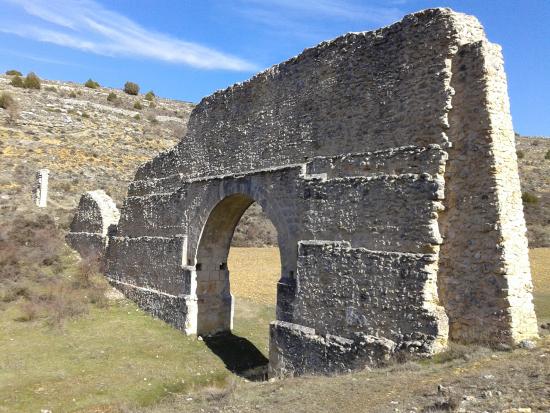The Zaorejas aqueduct, located in a deep green watercourse in a landscape that evokes past times, has been long considered a Roman work. However, in a recent video, on his YoutubeIsaac Moreno Gallo, a leading expert on Roman civil engineering, have cast doubt on this attribution.
Why might the Zaorejas aqueduct not be Roman?
Moreno Gallo, with his vast knowledge of Roman building techniques, has pointed out that the "factory" of the Zaorejas aqueduct does not correspond to the typical constructive canons of Roman engineering.. The Romans were known for their use of the opus caementiciuma kind of Roman concrete, as well as of the opus quadratumwhich consisted of rectangular blocks of carved stone, and from the opus mixtumThey used a combination of different techniques. These techniques, together with their mastery of hydraulics, enabled them to build impressive aqueducts that transported water over long distances.
However, the remaining section of the Zaorejas aqueduct does not seem to exhibit these distinctive features. The absence of written documentation and additional information leaves us with the unknown as to its true period of construction.. As an amateur, I am inclined to agree with Moreno Gallo's expert opinion: it is possible that we have been calling this aqueduct "Roman" by mere convention, without a solid basis.
The Roman "factory" in question
1. The construction technique:
- Factory: The Zaorejas aqueduct has an irregular construction, with ashlars of different sizes and shapes, joined with lime and sand mortar. This technique contrasts with the opus quadratum Roman, which is characterised by the regularity and precision of the cut of the ashlars, as well as by the arrangement in horizontal courses.
- Grooves: The ashlars of the Zaorejas aqueduct do not have the typical Roman grooves, which facilitated the fitting and joining of the stones.
- Semicircular arch: The only arch that remains in the Zaorejas aqueduct has a pointed profile, more typical of medieval than Roman architecture.
2. The absence of other Roman elements:
- Epigraphy: No inscriptions or markings have been found to confirm the Roman authorship of the aqueduct.
- Archaeological remains: No other Roman remains have been found in the vicinity of the aqueduct to corroborate its dating.
3. The function of the aqueduct:
- Single tranche: Only a small section of the aqueduct remains, making it difficult to determine its original route and destination.
- Acequia: The location of the aqueduct in a watercourse suggests that it may have been an irrigation ditch for irrigating fields, rather than an aqueduct for supplying water to a town. On the other hand, though, it is possible that we are dealing with a later work, perhaps medieval or even more recent, which has erroneously inherited the Roman label.
The value of doubt in archaeology
This case underlines the the importance of doubt and revision in the study of ancient works. As an archaeology enthusiast, I welcome the possibility that debates like this can enrich our knowledge of the past. It is not enough to accept traditional attributions; we must be open to reconsidering and, if necessary, rewriting history in the light of new evidence and expert analysis.
Here is a recent document with information that contradicts Isaac Moreno Gallo's hypothesis:
Conclusion
As archaeology enthusiastsour role is to keep an open mindWe must be willing to learn and marvel at the mysteries that our historical heritage still holds. The Zaorejas aqueduct, iegardless of its true origin, it remains a fascinating testament to ancient engineering and a reminder of how much remains to be discovered..


